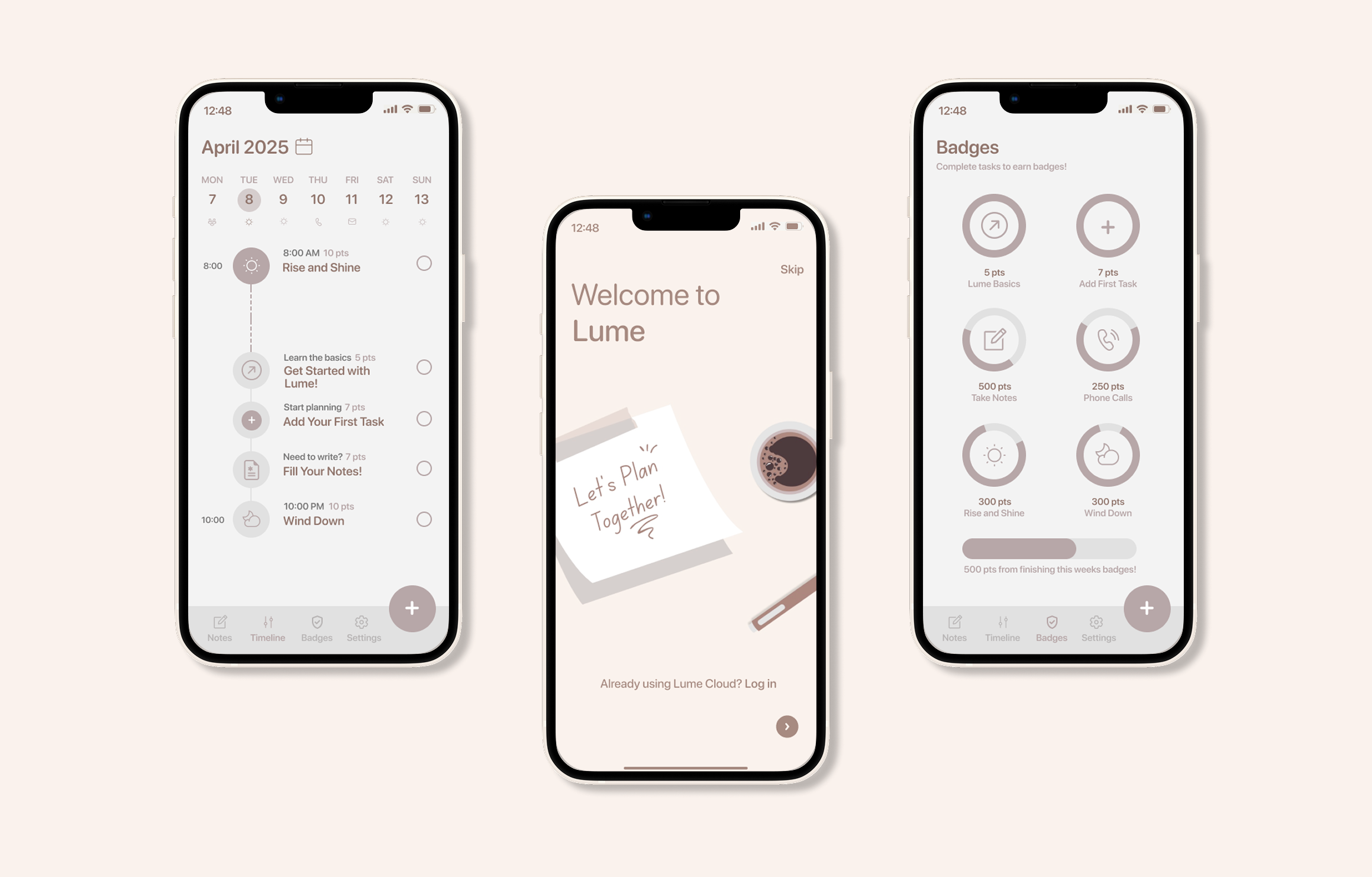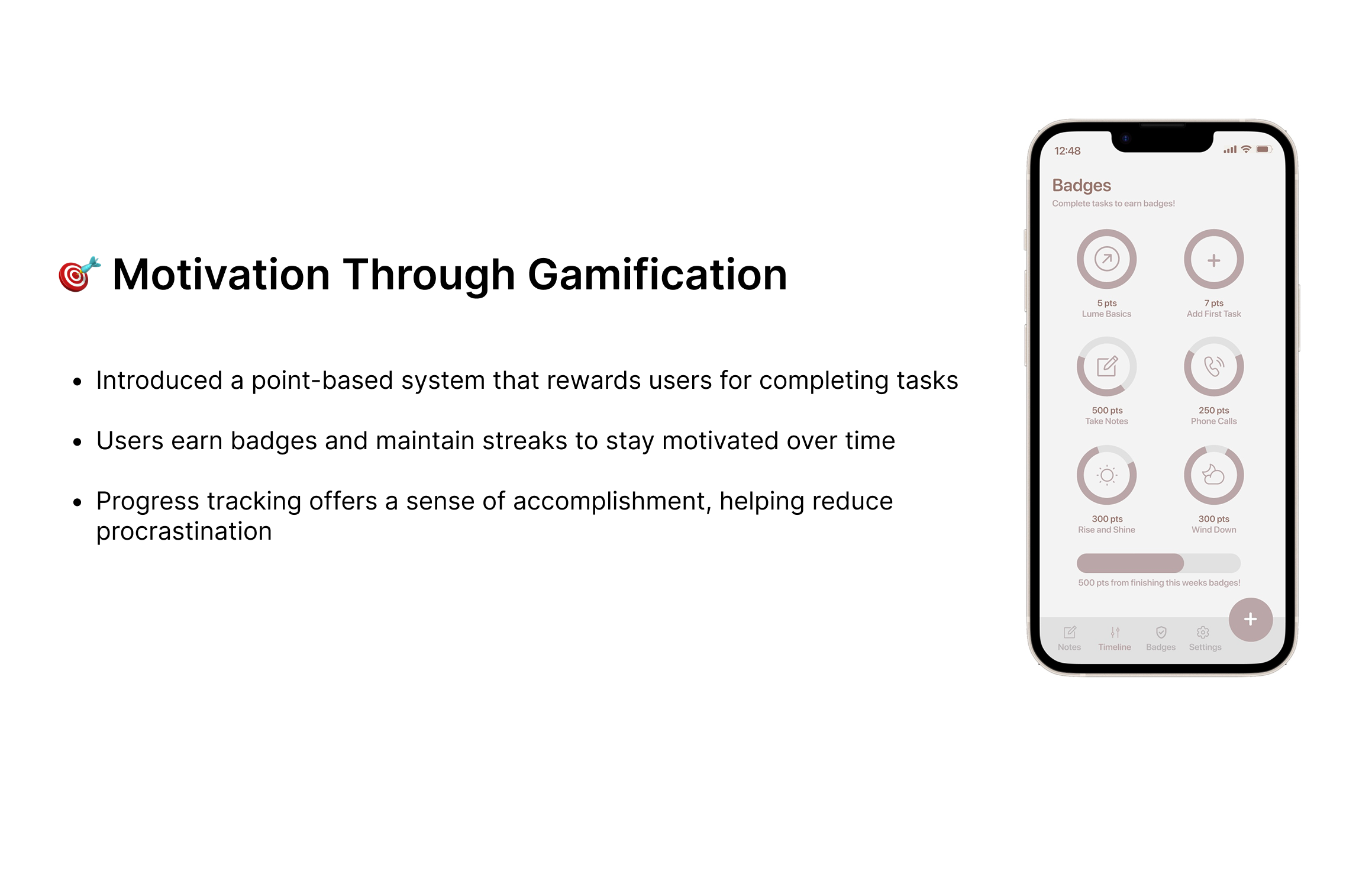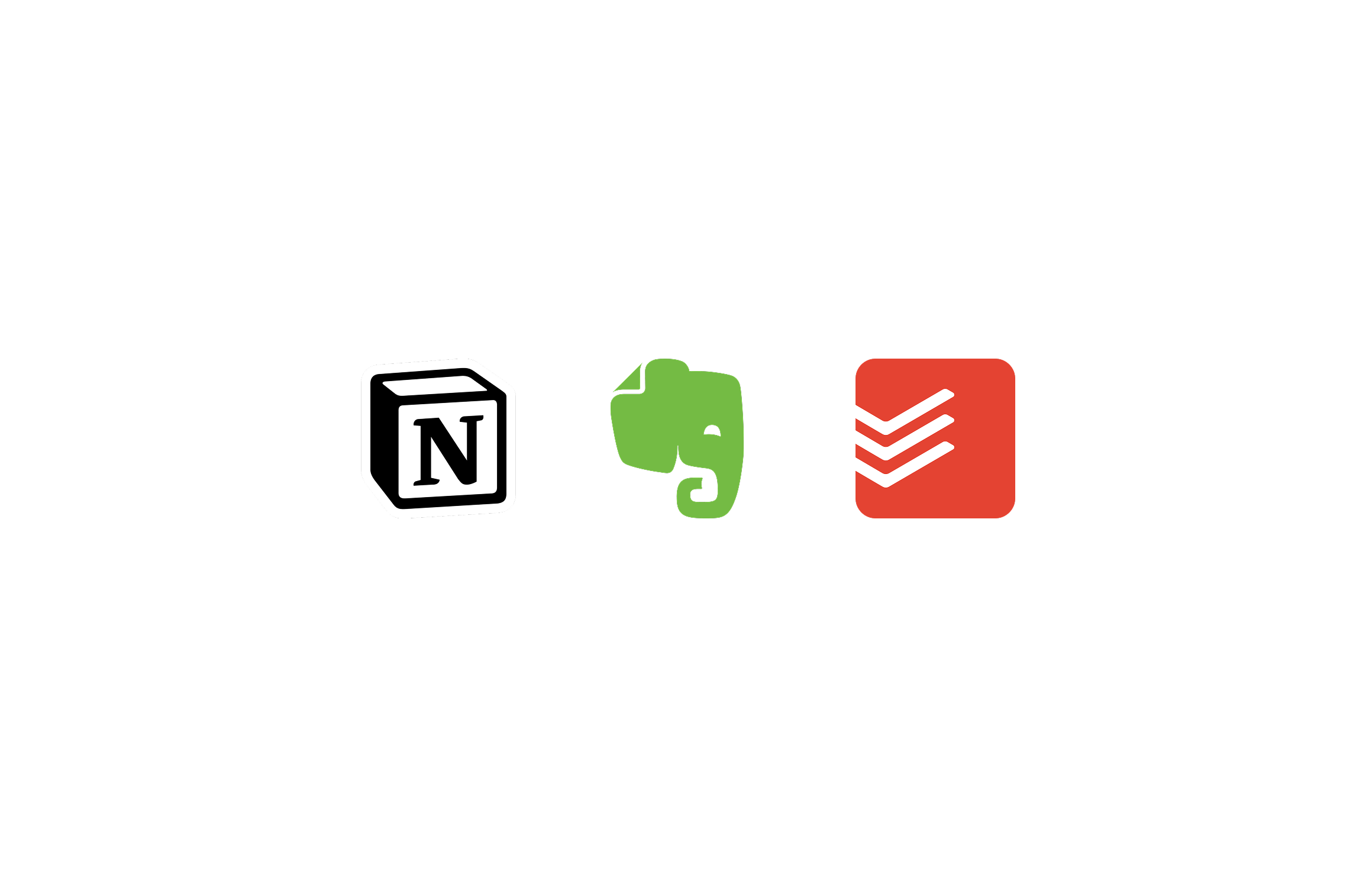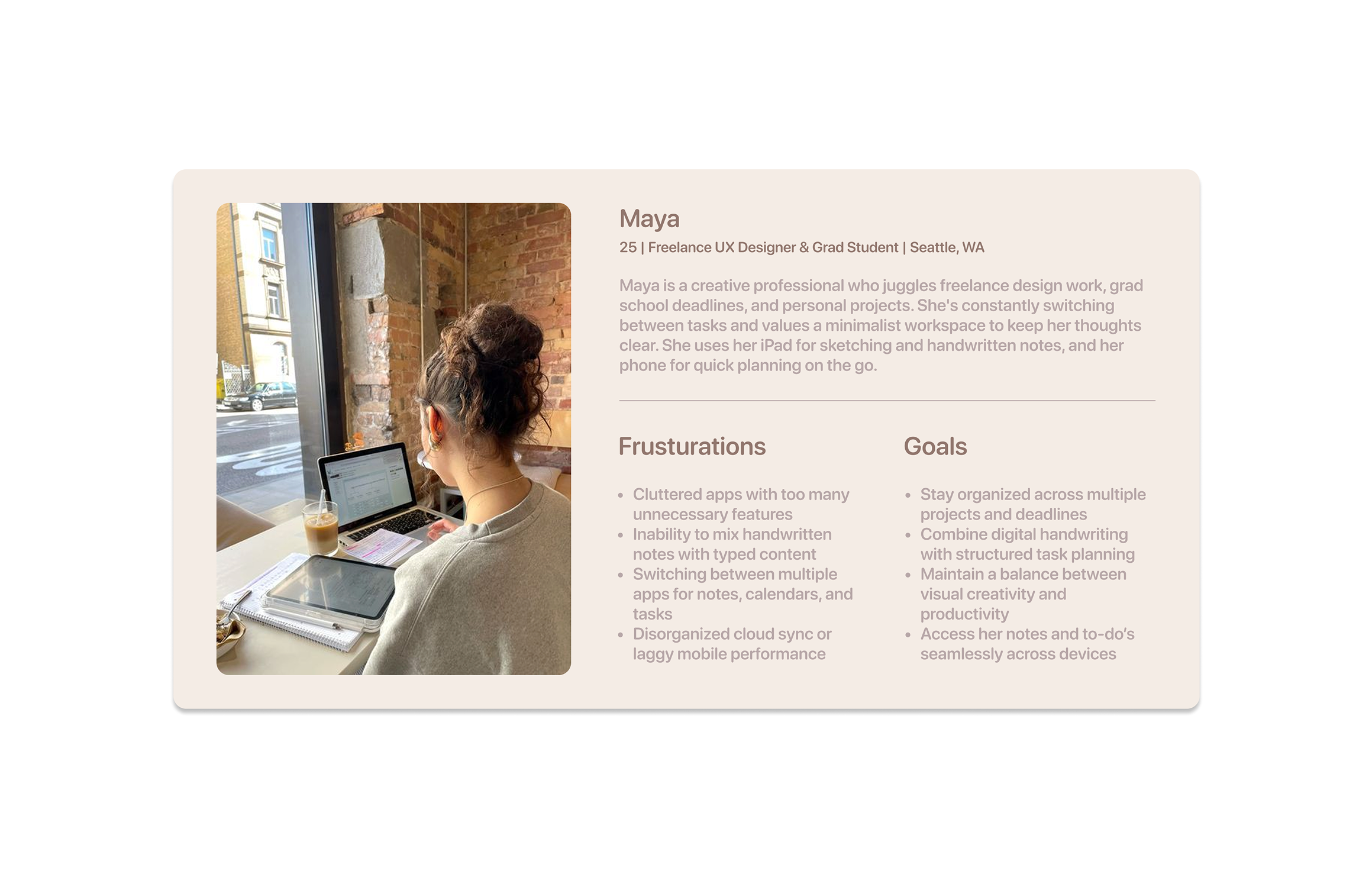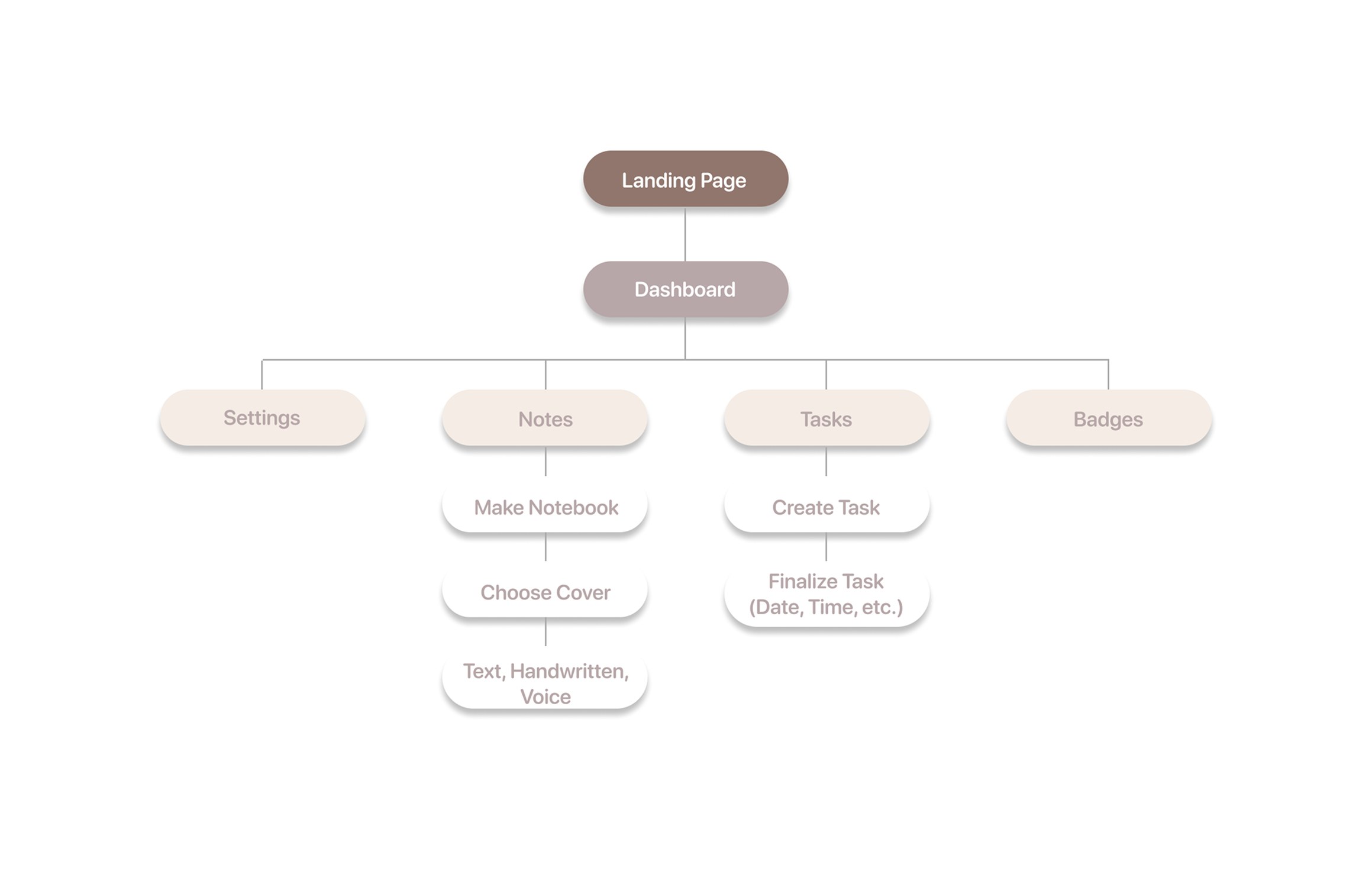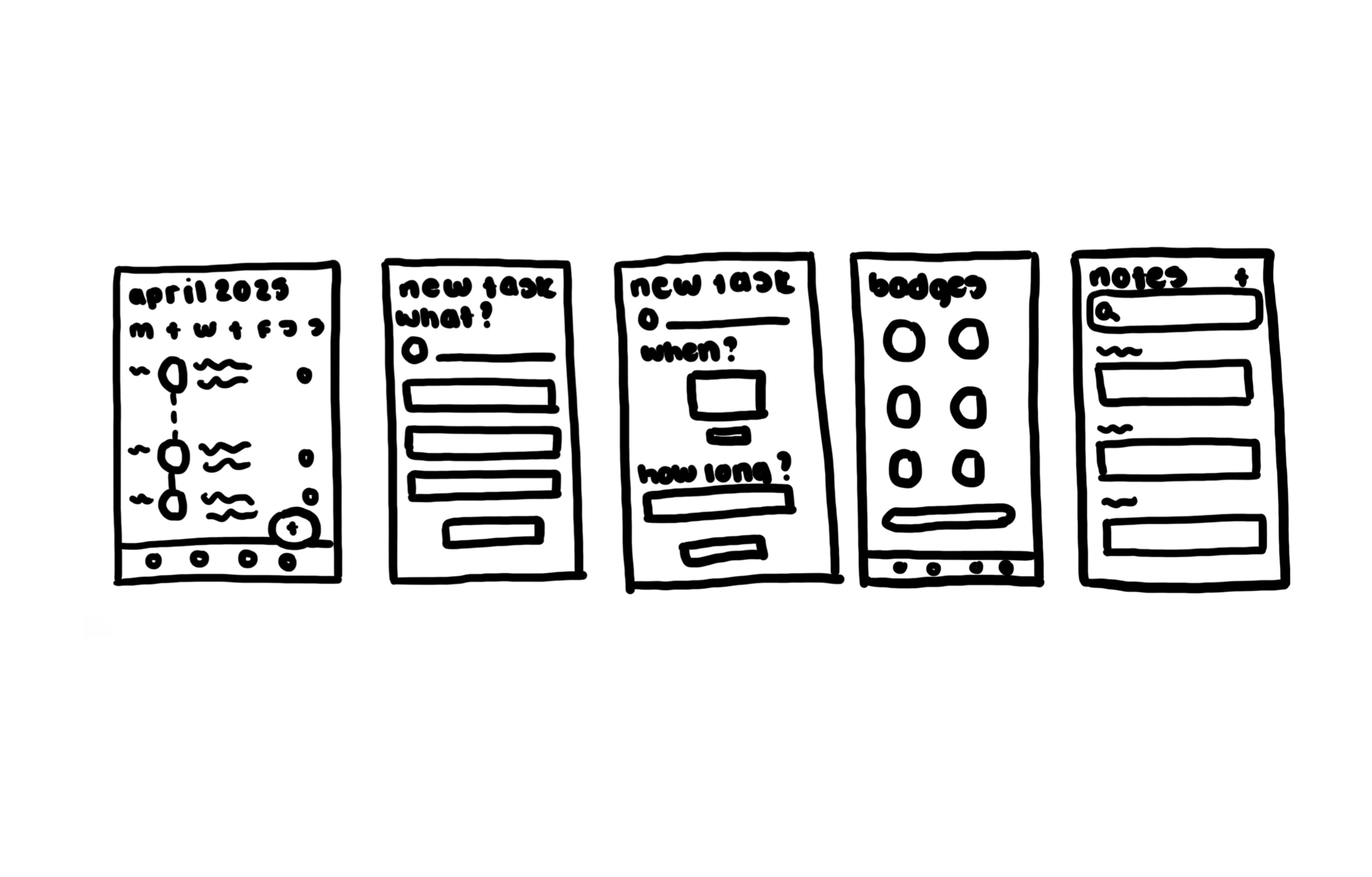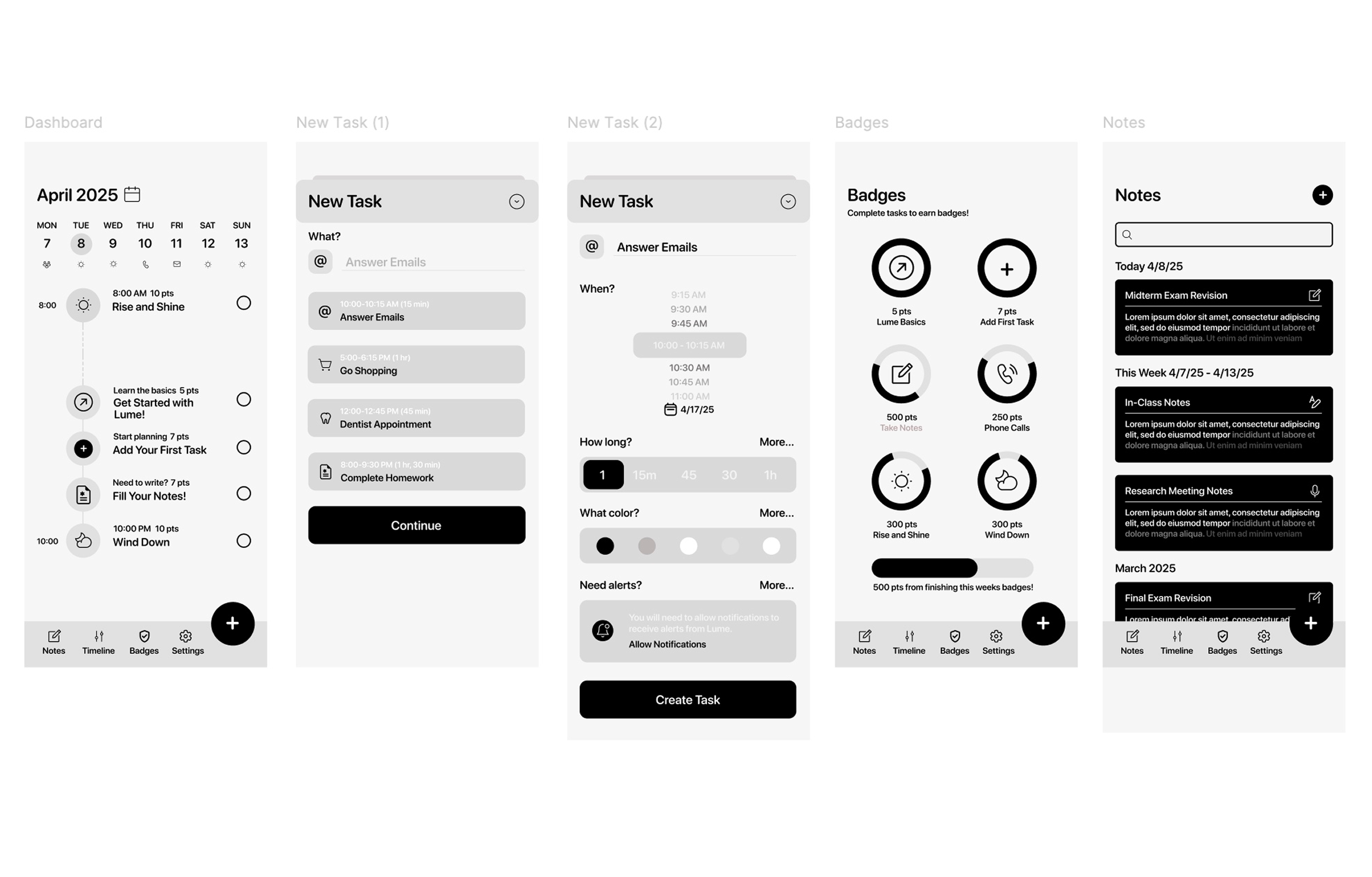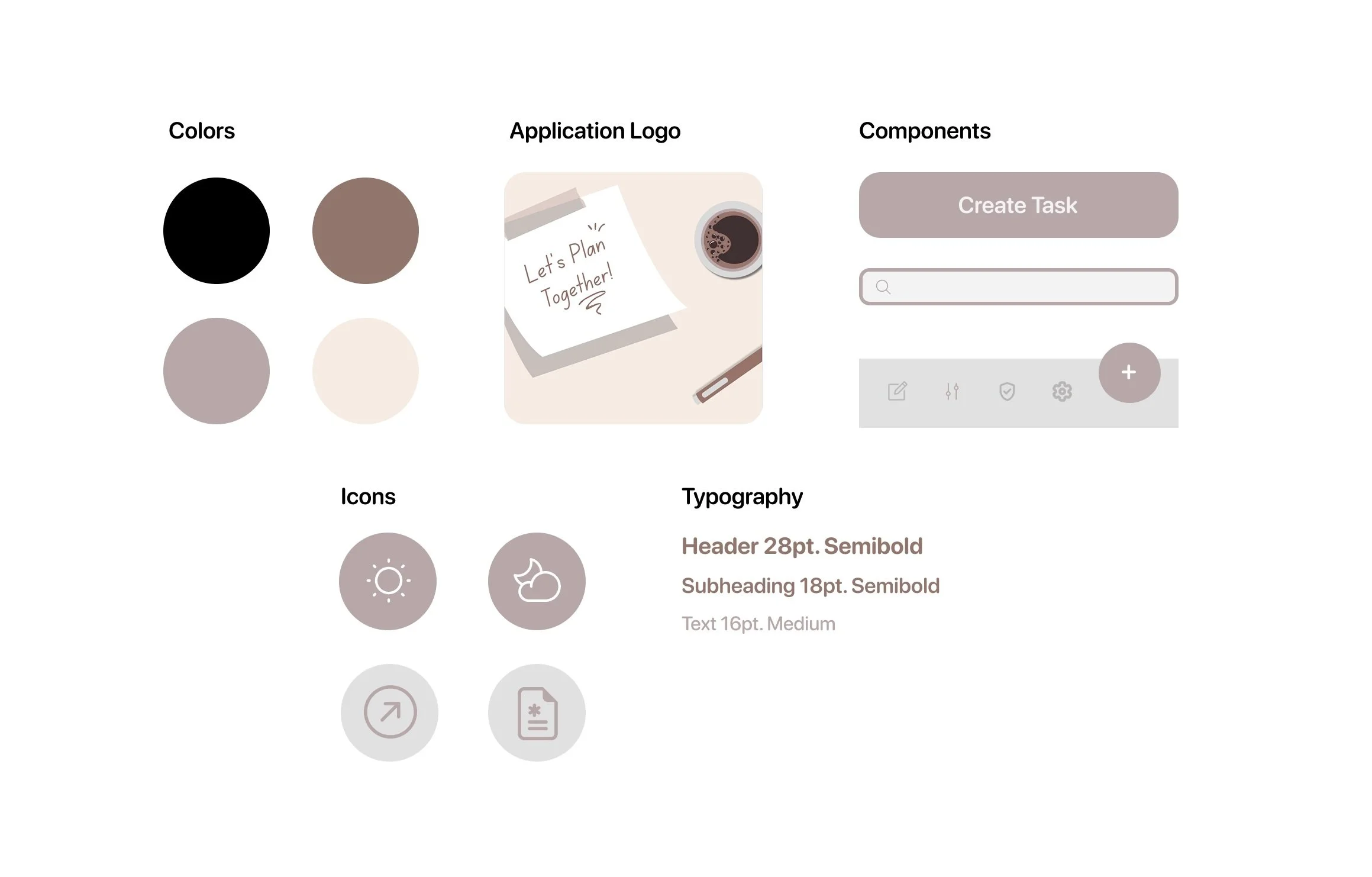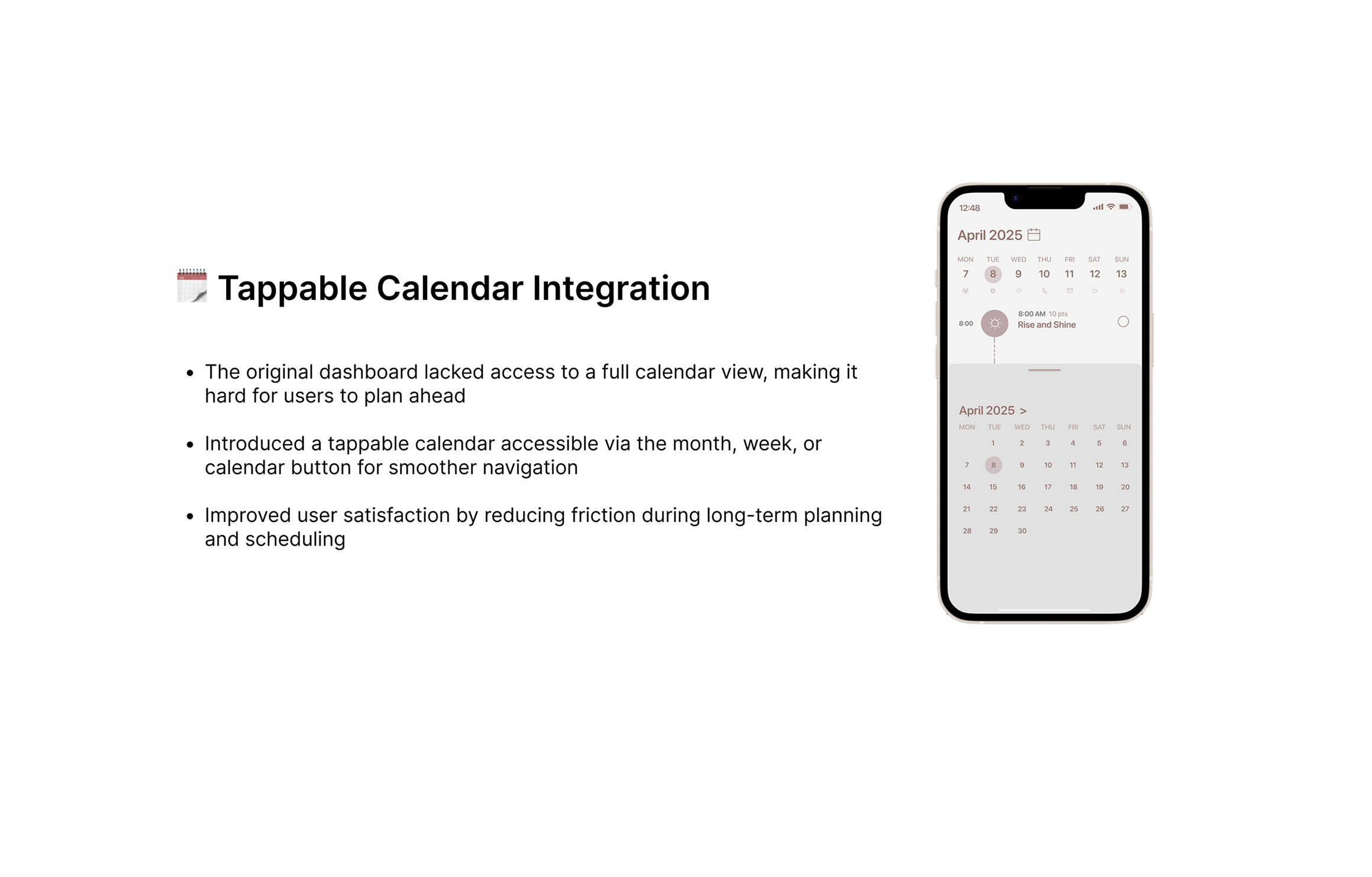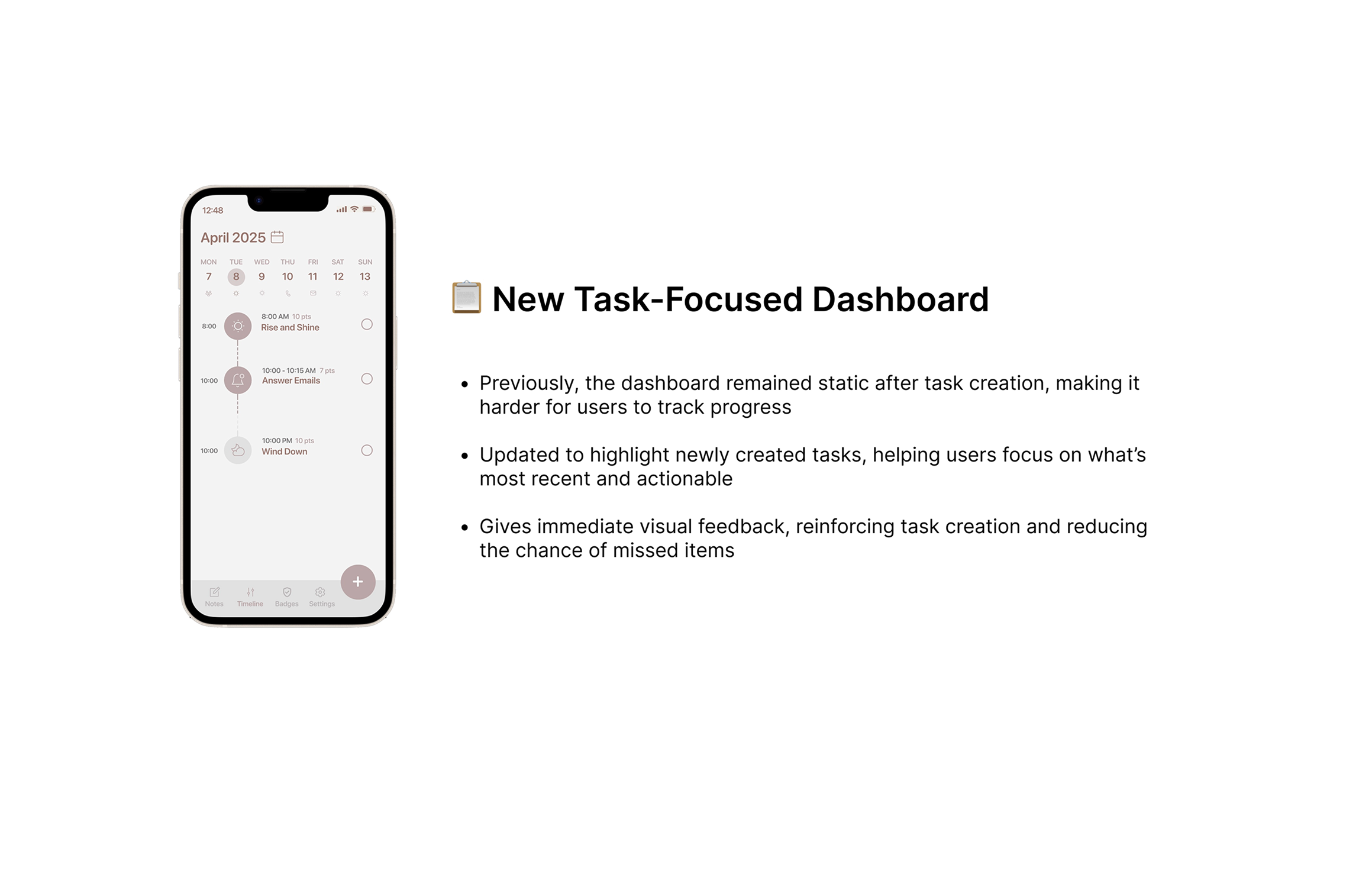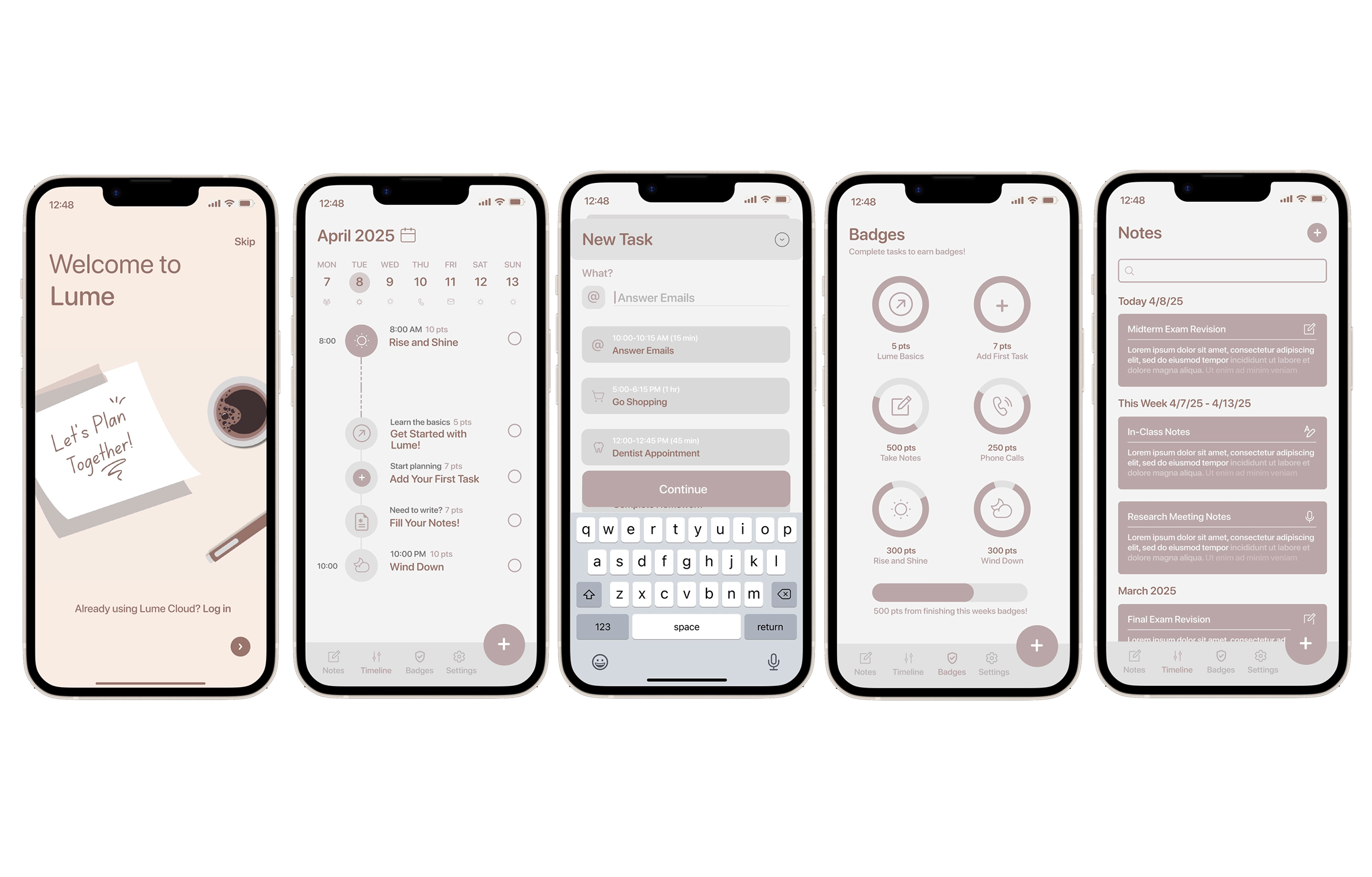Lume
Timeline: April - May 2025 (2 months)
PROBLEM
Many users struggle with staying organized and motivated when managing tasks
As a university student juggling classes and a part-time job, I often find traditional to-do apps overwhelming and uninspiring. Many students and young professionals want tools that not only help them stay organized but also give a sense of progress and achievement along the way
The Solution
Designing for Motivation and Momentum
Competitive Analysis + The Gap
Beyond the Competition: Finding the Missing Piece
I analyzed 3 popular apps surrounding the goal/productivity space: Notion, Evernote, and Todoist. While these three apps are innovative and helpful for millions of users, none of the three apps seamlessly combine freeform note-taking (voice, text, handwriting) and actionable task conversion with a gamified system that motivates users through rewards and progress tracking
User interviews
Listening to Real Voices: Insights from Student Interviews
I conducted user interviews with four students from the University of Washington who often struggle to complete assignments and tasks on time. Through guided questions, I explored the factors that contributed to their success or failure in managing different tasks. After gathering responses, I analyzed the data to identify common trends and pain points
The interviews revealed a recurring trend where users rely on multiple platforms for note-taking and task management. When faced with a long list of tasks without clear priorities, users often feel overwhelmed, leading to procrastination and avoidance. Additionally, many users expressed difficulty navigating the interfaces of these apps
User persona
Designing with Empathy
To keep user needs at the heart of the design process, I created a detailed user persona based on interview insights. Meet Maya: a busy university graduate student who juggles multiple deadlines and often feels overwhelmed by scattered notes and task lists
User Flow
Mapping the Journey
To understand the ideal path a user might take within the app, I created a user flow that outlines key actions, from adding a note to earning points through completed tasks. This visual helped identify where to simplify navigation and reduce friction
Paper Wireframes
Sketching to Solve
Early on, I used rapid paper sketches to explore layout ideas and interactions. These low-fidelity wireframes allowed me to quickly test different concepts before moving into digital prototyping
Digital Wireframes
Structuring the Experience
After refining my sketches, I translated them into digital wireframes. I focused on clarity and usability, ensuring that task creation, note-taking, and point tracking were intuitive and accessible
UI Kit
Building the Visual Language
I created a UI kit to maintain visual consistency across the app. It includes typography, color styles, button components, and icons—all optimized for mobile accessibility and a clean, modern feel
User Testing + Iterations
Refine, Test, Repeat
Based on user testing sessions with 4 participants, I continuously iterated my designs over the span of 2 weeks—with two major improvements
The final screens
The Final Product
Conclusions + Lessons Learned
The Takeaway Trail
Designing Lume taught me the importance of balancing flexibility with simplicity. Through user interviews, iterative testing, and refining the dashboard and calendar features, I realized how small changes like surfacing new tasks or integrating a calendar can greatly impact user experience.
Key takeaways:
User feedback is invaluable: Insights from real users uncovered pain points I hadn’t initially considered, like task overwhelm and the need for visual clarity.
Structure doesn’t have to mean rigidity: By allowing users to organize in their own way, Lume encourages productivity without pressure.
Details drive engagement: Thoughtful interactions like tappable elements and dynamic task updates helped make the app feel intuitive and responsive.
This project strengthened my belief that great UX comes from empathy, iteration, and a deep understanding of user habits.

